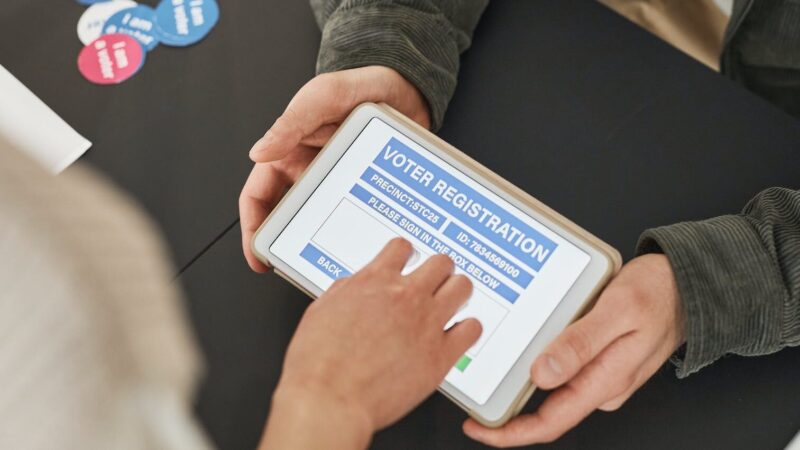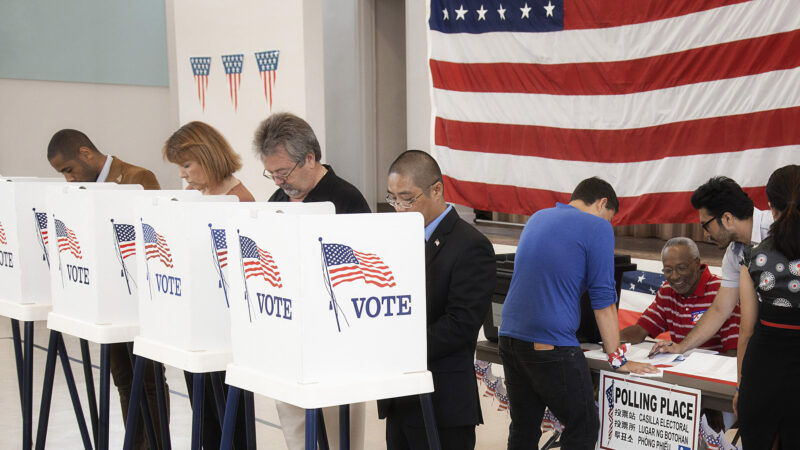Digital poll worker application toolkit
A tool for efficiently managing poll worker applicants.

What you’ll need
- A free Google account to access, copy, and edit the sample application
- Ability to link or embed the form to your jurisdiction’s website
Getting started
A bit of preparation will make it easier to put your application online.
- Compile links to:
- Your jurisdiction’s/state’s voter registration website including:
- A method to register to vote
- A way to check your current registration status
- Poll worker information and qualifications (including your Standards of Conduct)
- Your jurisdiction’s/state’s voter registration website including:
- Review local laws and policies related to poll worker hiring requirements for your jurisdiction to ensure your new application will ask applicants to provide all necessary information to determine their eligibility
- Have a copy of your current poll worker application handy to compare it to your new online application so you don’t leave anything out
Using the Tool
Choosing an online survey platform1. Choosing an online survey platform
Online survey platforms are tools designed to collect data electronically from users. They offer various features for creating and managing forms and surveys. Google Forms and Airtable are popular choices for building online poll worker applications due to their user-friendliness and versatility. However, many online survey platforms can be used.
- Google Forms is known for its ease of use and integration with Google services. It allows data export and basic analysis tools.
- Airtable offers spreadsheet-like flexibility and can handle more complex data needs. It provides extensive customization options.
Both platforms offer free plans, making them cost-effective choices. Additionally, sharing across your office is straightforward on both platforms. You can download application data to share or allow multiple user accounts from your office to securely access the information directly from the web.
In this toolkit, we are providing a template application built in Google Forms that you can copy and edit for your own use.
Tips for selecting and creating questions2. Tips for selecting and creating questions
When crafting questions for your poll worker application, consider the following:
- Refer to your existing poll worker application questions for inspiration. For example, if your current application asks about particular technical skills, consider adding a question specifically about that to the Experience and Skills section.
- Add questions from the template if they provide valuable information. For instance, the template includes a question about how the applicant heard about the opportunity to be a poll worker. If you don’t have it yet, adding this question can provide useful information about which of your recruitment methods are most effective.
- Tailor questions to your office’s specific needs. Do you need poll workers that speak specific languages? Asking directly about skills like languages spoken can help you meet the language needs of your voters.
- Consider the question type (multiple choice, open response) based on the information you seek. Multiple choice questions can be easier to organize and the options help applicants understand what kinds of answers you want. One example where this is useful is when you need a definitive “yes” or “no” answer to a question. Open response questions are better when you can’t reasonably list all possible options or you want to give the applicant space to explain.
- Balance the number of questions in the application. There should be enough questions to get the information you need, but not too many questions to deter potential poll workers from completing the application. As a general rule of thumb, ask for only the information you know you’ll use.
3. Sample Application (Google Forms)
Google Forms is a user-friendly tool for creating online surveys, quizzes and forms. Below are basic steps to get started on the platform.
Access the sample application template (if you are logged into a Google account, click “Use Template” to get your own copy. If not, it will prompt you to log in.) Check out the next section for detailed guidance on using Google Forms.
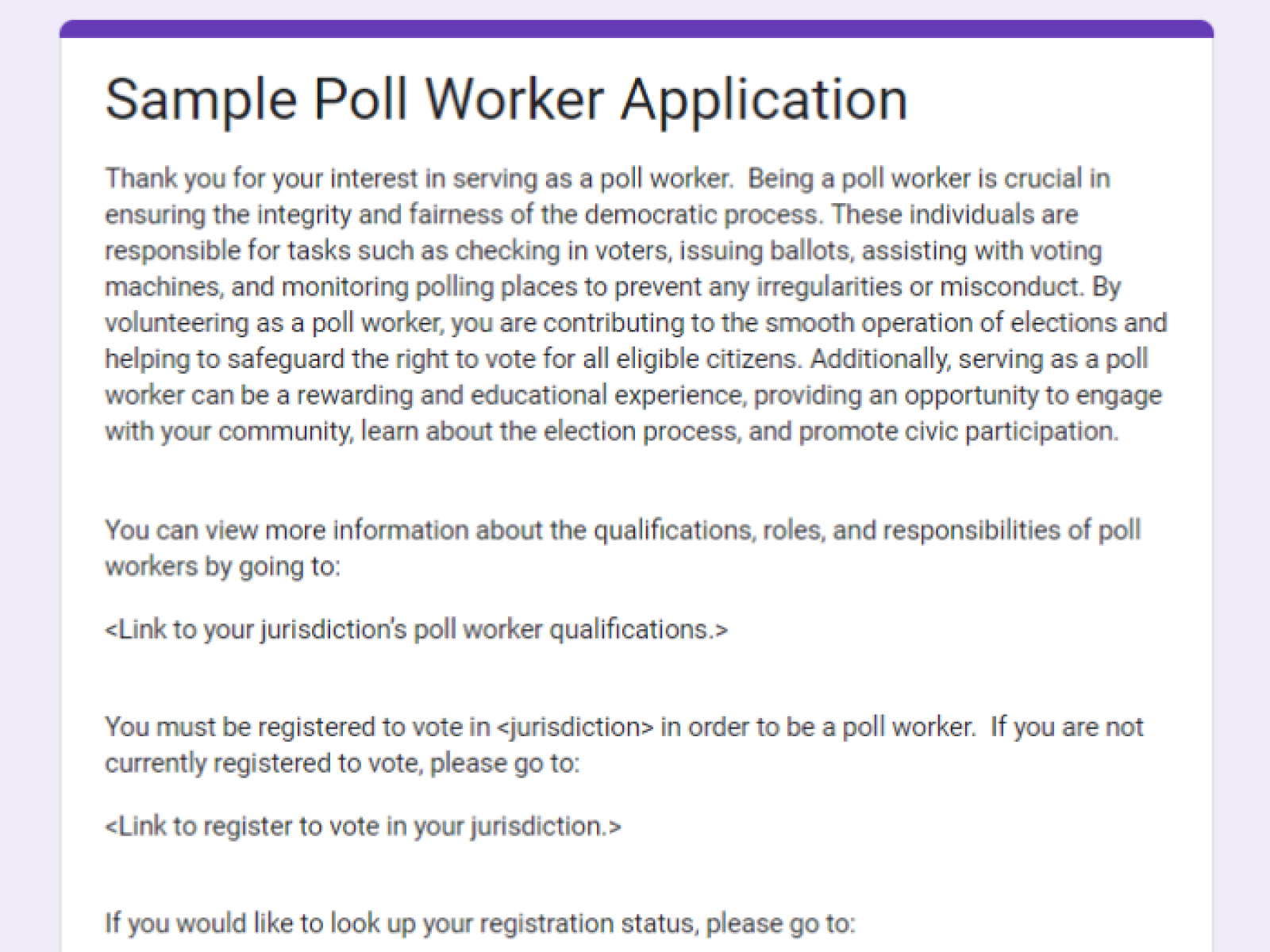
4. Quick guide to Google Forms
Here are some more instructions on using Google Forms, if you are new to the platform:
- Access Google Forms.
- If you already have an account, sign in to Google.
- If you don’t already have an account, you can create a Google account for free.
- Create your form.
- Once you have your account, click the link below (underneath the sample application). Then, click the “Use Template” button. That copy is only accessible to your Google account. No one else can edit it and only you can see the responses that come in.
- Rename your form by clicking on “Sample Poll Worker Application” at the top left and provide a meaningful title for your form.
- Be sure to specify the location on your Google Drive for where you’d like to store it.
- Then, you can add your office’s name, information, and the links to relevant web pages in the introduction.
- Add or edit questions.
- Make whatever changes you want to the questions – you can add additional questions or delete, edit, and reorganize existing questions as suits your office’s needs.
- Click on the question titles to edit or change the questions. You can choose various question types, including multiple choice, short answer and more.
- Customize your question by making it required or providing answer choices. Remember that if a question isn’t marked as “Required”, the application can be submitted without answering it. Required questions will show a red asterisk next to them.
- Customize form settings.
- Click on the Settings tab at the top to access form settings. Here you can customize the options such as collecting email addresses, limiting responses or enabling notifications.
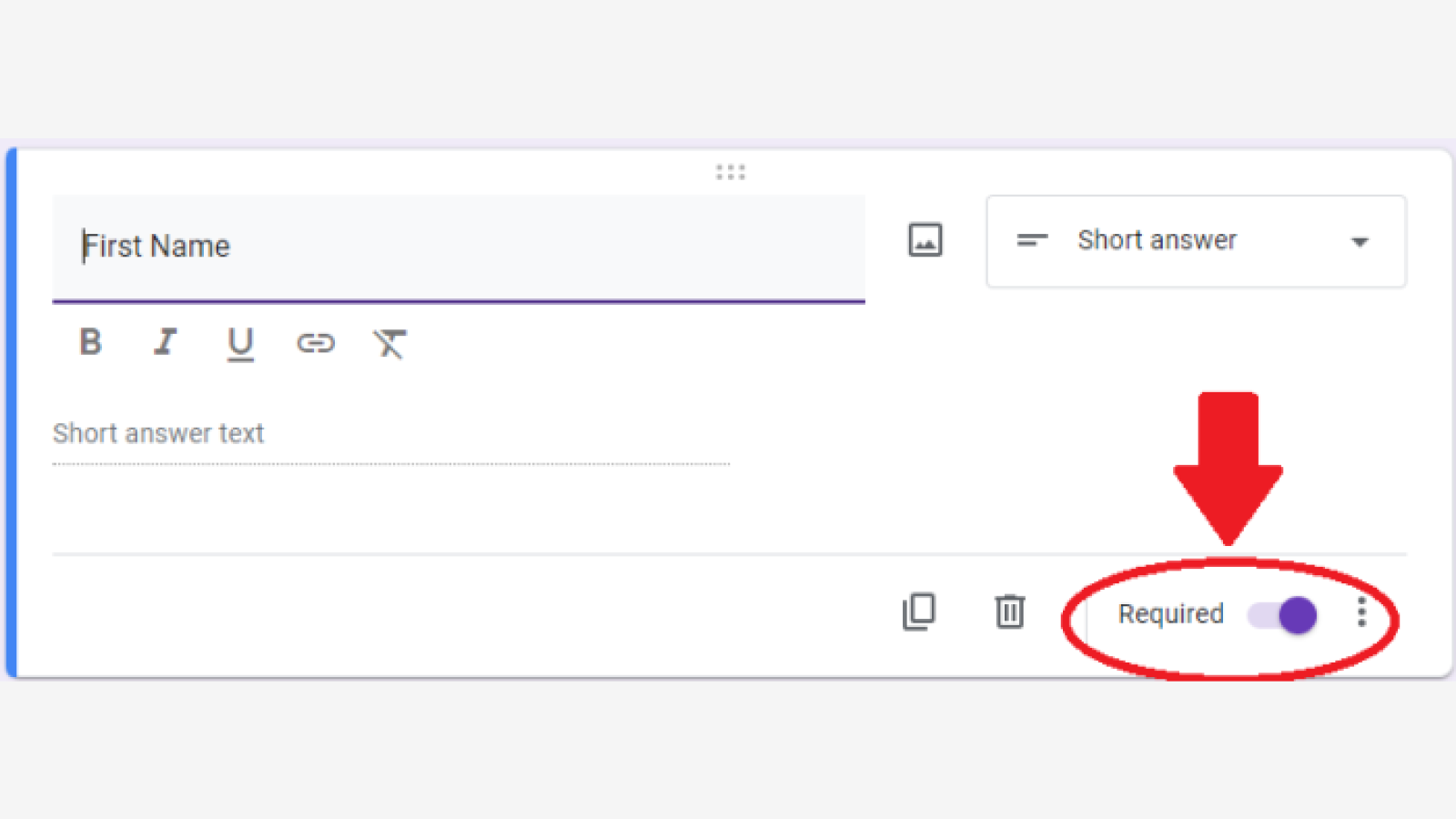
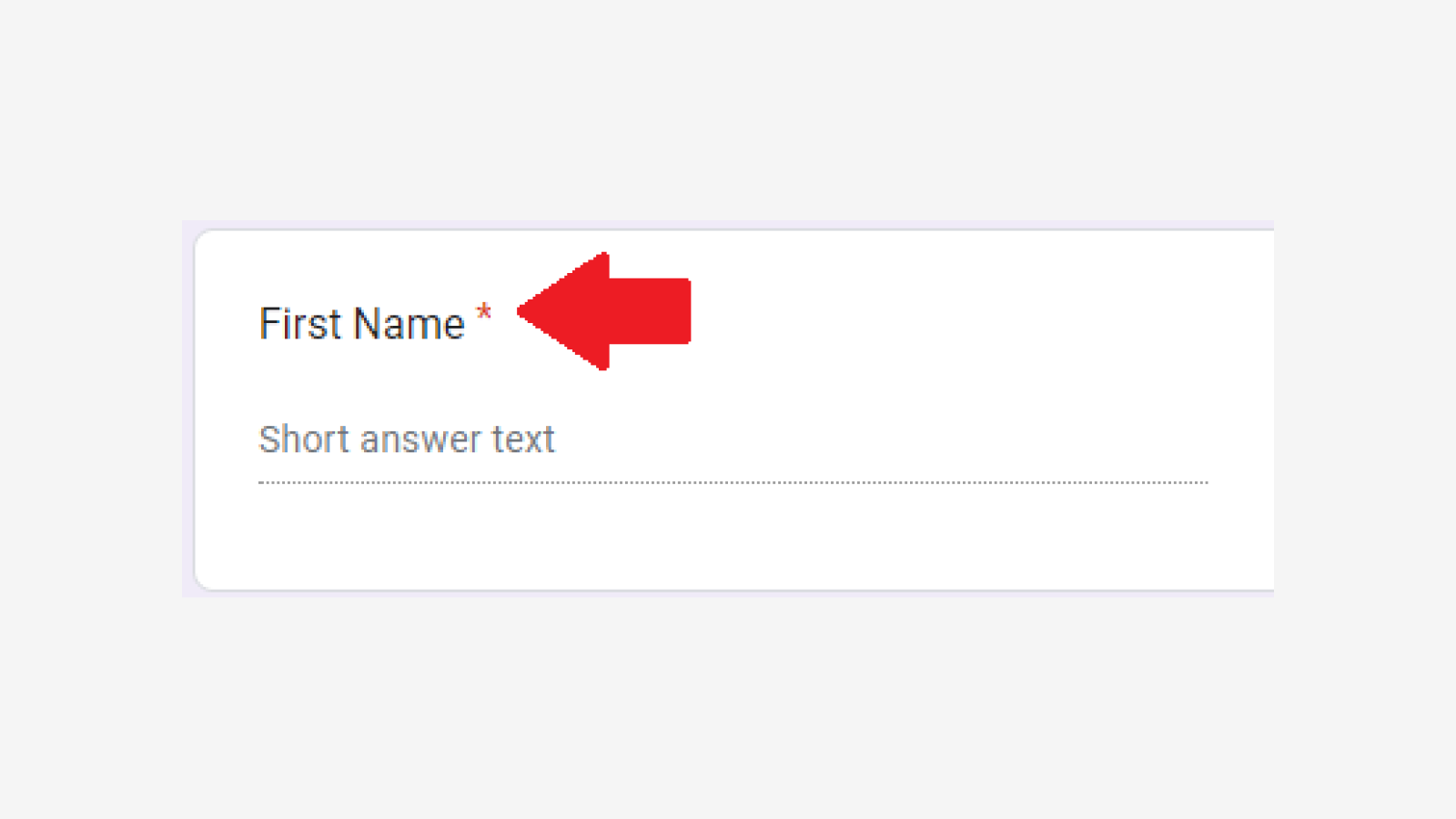
5. Sample application introduction and questions
If you’d like to just copy the sample application’s introduction and questions, they’re here, for your reference.
Sample Introduction/Qualifications
Thank you for your interest in serving as a poll worker. Being a poll worker is crucial in ensuring the integrity and fairness of the democratic process. These individuals are responsible for tasks such as checking in voters, issuing ballots, assisting with voting machines, and monitoring polling places to prevent any irregularities or misconduct. By volunteering as a poll worker, you are contributing to the smooth operation of elections and helping to safeguard the right to vote for all eligible citizens. Additionally, serving as a poll worker can be a rewarding and educational experience, providing an opportunity to engage with your community, learn about the election process, and promote civic participation.
You can view more information about the qualifications, roles, and responsibilities of poll workers by going to:
<Link to your jurisdiction’s poll worker qualifications.>
You must be registered to vote in <jurisdiction> in order to be a poll worker. If you are not currently registered to vote, please go to:
<Link to register to vote in your jurisdiction.>
If you would like to look up your registration status, please go to:
<Link to voter registration lookup in your jurisdiction.>
Sample Questionnaire
To complete your poll worker application, please submit the form below.
First Name
Last Name
Birthday
Physical Address
Physical Address City
Physical Address State
Physical Address Zip
How many miles are you willing and able to travel from your home for training and to work on Election Day?
Are you a student?
Are you registered to vote in <jurisdiction>?
Political Party affiliation (if applicable)
Are you able to attend the required training?
Do you agree to the Standards of Conduct?
Mailing Address
Mailing Address City
Mailing Address State
Mailing Address Zip
Cell Phone
Home Phone
Do you have previous experience as a poll worker?
Are you able to assist voters in a language other than English, including American Sign Language?
If you’re able to assist in another language, please indicate the language.
Do you have any other relevant skills or experience for serving as a poll worker?
How did you hear about this opportunity?
- Social media
- Newspaper
- Radio
- Community organization (Add the organization’s name below so we can thank them!)
- Another poll worker (Add their name below so we can thank them!)
- I’m a returning poll worker
- Other (tell us more below)
Customizing for your office
Any tips for customizing this resource for my office?
Customizing this resource is essential to meet your office’s specific needs. Collect information from potential poll workers that is relevant to your jurisdiction, but remember to balance the number of questions to ensure you receive the information you need without deterring potential poll workers with a long application.
One example of customization relates to poll worker training. If you offer a number of poll worker training sessions, you can ask applicants to select their preferred training date, time, and location in the application itself. Then, if you hire the poll worker, you already know their training preferences and can send a simple confirmation instead of starting the scheduling process from scratch.
How do I know if this resource is helping?
You will know if this resource is helping if you see an increase in the number of poll worker applications or if the quality of the information you receive increases. Another sign the resource is helping is a decrease in the time it takes your office to process a poll worker application or refer back to the information in poll worker applications later.
Which Values for Election Excellence does this resource support? Why?
Values for the U.S. Alliance for Election Excellence define our shared vision for the way election departments across the country can aspire to excellence. These values help us navigate the challenges of delivering successful elections and maintaining our healthy democracy.
Alliance values are designed by local election officials, designers, technologists and other experts to support local election departments.
You may find this tool especially helpful for these Values:
- Continuous improvement, why: Having a larger, more qualified pool of potential poll workers will ensure that your team is prepared for Election Day.
Sharing Feedback
How was this resource developed?
This resource has been put into practice by at least one jurisdiction. Share your experience with this resource and improve it for your peers by reaching out via support@ElectionExcellence.org
How do I stay in touch?
- For the latest news, resources, and more, sign up for our email list.
- Have a specific idea, piece of feedback, or question? Send an email to support@ElectionExcellence.org

